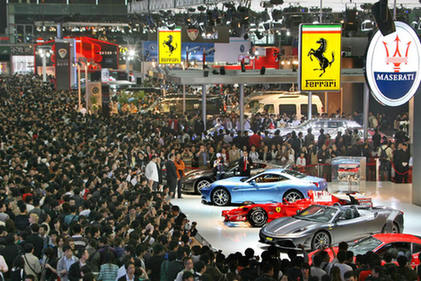| Ten Years in WTO
What Has Changed in China and the World?
By YAO LING
ON accession to the World Trade Organization (WTO), China promised further economic reform and opening-up, establishing a trade policy system in line with international rules and advancing the healthy development of its national economy and foreign trade. In the 10 years since then China has honored those promises and seen momentous change.
Growing at an annual rate of 10.5 percent, the Chinese economy has climbed from the sixth largest economy in the world to the second. The value of its imports and exports have increased 4.8 times from US $509.7 billion to US $2.97 trillion, lifting China's share of global trade from 4 percent to 9.7 percent. Since 2005 net export's contribution to China's economic growth has remained at around 20 percent, adding two percentage points to the country's year-on-year growth rate.
This enormous growth not only benefits China, as its huge market and growing imports spell opportunities for businesses worldwide. In the decade from 2001 to 2010 China's annual imports averaged US $750 billion, creating 14 million jobs for its trade partners. In response to the financial crisis that broke out in 2008, China took advantage of its strong economic position and deliberately stepped up its global spending to stimulate the struggling world economy. In 2009 and 2010 China's contribution to global growth exceeded 50 percent, providing strong support for the recovery of world economy.
 |
|
The hall for imported luxury models at a Shanghai auto show receives an ocean of visitors. |
A Highly Open System of Foreign Trade
In the past decade China has set up a highly open system of foreign trade according to its promises to the WTO, and so far it has smoothly passed three WTO reviews of its trade policies and won positive appraisals from the organization and its members. The first step towards this achievement was the formation of a three-tier legal system, consisting of the Foreign Trade Law, the Regulations on the Administration of Cargo Imports and Exports, and rules and regulations formulated by relevant administrations. It allows China to operate its imports and exports according to law and follow a standardized, transparent and indiscriminative process. China modified 3,000 laws and regulations in line with WTO rules and regulations.
Meanwhile, the Chinese government released its hold on foreign trade operation rights, allowing diversified players in the import and export sector. The Measures for Registration of Foreign Trade Operators came into effect on July 1, 2004, requiring licensed companies to file with relevant authorities when taking up import and export operations instead of having to apply for government approval as before. Reform of China's foreign trade operation system was one of the promises China made to the WTO, and was implemented six months before the deadline. It scrapped the monopoly of state-owned import and export companies, and brought into the game more players. After abolishing state-owned enterprises monopoly over imports and exports, private, foreign-funded and joint-venture companies account for nearly 90 percent of China's total exports.
| 